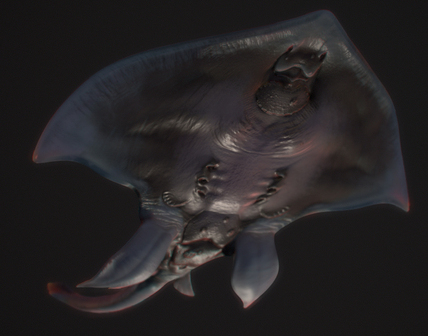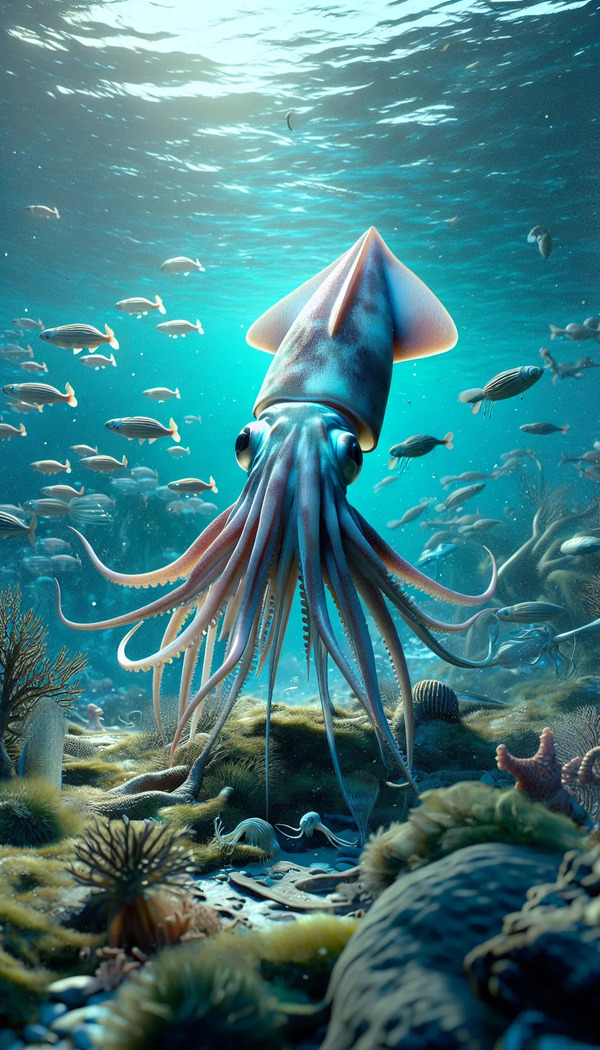The ocean is a vast and mysterious place, teeming with countless creatures, some beautiful and others downright terrifying. Among the most fearsome of these sea creatures is the notorious "Devil Fish." This name, often associated with a number of predatory marine species, conjures images of deadly, aggressive, and monstrous creatures that lurk in the deep, waiting to strike. In this article, we explore the terrifying reality behind the myth, looking at the real animals that have earned the infamous title of “Devil Fish.”
The giant devil ray (Mobula mobular) is perhaps the most widely recognized species to carry the “devil fish” moniker. Known for its enormous size and formidable appearance, the giant devil ray can grow up to 17 feet in wingspan. It glides eerily through the waters of the Mediterranean Sea, often found in deeper regions where sunlight barely penetrates, adding to its mysterious aura.
While the giant devil ray is technically not aggressive toward humans, its name originates from the frightening shape of its head, complete with horn-like projections called cephalic lobes, which give it a devilish appearance. These lobes assist the ray in directing plankton and small fish into its gaping mouth, but to an unknowing observer, it could easily be mistaken for something far more sinister. The dark, ghostly silhouette of the giant devil ray gliding beneath the surface has inspired many a sailor’s tale of “demon-like” creatures haunting the seas.

Another species often labeled as a "devil fish" is the stingray—and for good reason. Unlike the giant devil ray, the stingray poses a much more direct threat to humans. Found in tropical and subtropical waters worldwide, stingrays are typically peaceful creatures, resting on the seabed in shallow waters. However, when provoked, they can strike with lightning speed using their venomous barbed stingers.
Stingray attacks are rare but can be fatal. The infamous death of wildlife expert Steve Irwin in 2006 serves as a grim reminder of how dangerous these creatures can be. Stingrays have a long, whip-like tail equipped with sharp, venomous spines, which they use to defend themselves when threatened. The pain from a stingray’s barb is described as excruciating, often leading to infections or worse. Encountering one of these “devil fish” unexpectedly can turn a peaceful ocean dive into a life-threatening nightmare.

Descending into the darkest depths of the ocean, we find another creature that fits the description of a “devil fish”: the vampire squid (Vampyroteuthis infernalis). This deep-sea nightmare earned its terrifying name not only because of its blood-red appearance but also due to its ability to live in the oxygen-starved zones of the deep ocean—places where few other creatures can survive.
With large, glowing eyes and webbed tentacles, the vampire squid lurks in the deep, where it displays an eerie bioluminescence, glowing in the dark to attract prey. While it primarily feeds on detritus (dead organic matter), its appearance is nothing short of terrifying. Its umbrella-like tentacles and its menacing name have led to many misinformed tales of it being a predatory monster. The vampire squid’s defense mechanism, which involves ejecting bioluminescent mucus to confuse predators, only adds to its creepy legend.
One of the most aggressive and terrifying marine creatures that could also be called a “devil fish” is the Humboldt squid (Dosidicus gigas). Nicknamed the "Red Devil" for its aggressive nature and ability to change color when excited or agitated, this massive squid can grow up to 6 feet in length. The Humboldt squid has been known to attack divers unprovoked, using its sharp beak and powerful tentacles to latch onto and tear into its prey.
What makes the Humboldt squid especially frightening is its intelligence and highly coordinated hunting techniques. They are known to hunt in large groups, often overwhelming their prey with numbers and sheer ferocity. Divers have reported being surrounded by these creatures, sometimes even being bitten or lashed by their powerful tentacles. Stories of their aggressive attacks have made them infamous, earning them a rightful place in the terrifying roster of ocean “devil fish.”

While technically not a “devil fish,” the oceanic whitetip shark has been described in similar terms by sailors and ocean-goers. This shark is notorious for its involvement in attacks on shipwreck survivors and stranded sailors. Often appearing when least expected, oceanic whitetip sharks are opportunistic hunters, circling their prey and striking with deadly force. Their fins, often protruding from the water in the traditional "shark silhouette," have haunted the nightmares of those lost at sea.
Historically, oceanic whitetip sharks have been blamed for many fatal attacks, particularly following naval ship sinkings during World War II. Survivors described these sharks as relentless, circling lifeboats for days, picking off the weak and the wounded. Their reputation as silent, ever-present killers has made them one of the ocean's most feared predators.

The label “devil fish” encompasses a variety of aquarium/52-marine-animals.html">marine animals, each with its own terrifying qualities, whether through their appearance, behavior, or deadly abilities. These creatures represent the unknown, the mysterious, and the fearsome power of the ocean’s depths. While many of the animals labeled as “devil fish” pose little threat to humans, their otherworldly features and behaviors have made them the subjects of legends, fears, and nightmares for centuries.
Whether it’s the massive wings of the devil ray, the venomous sting of the stingray, the deep-sea horrors of the vampire squid, or the aggressive onslaught of the Humboldt squid, the creatures that bear the name “devil fish” will continue to inspire awe, fear, and fascination in equal measure.
animal tags: Devil-Fish
We created this article in conjunction with AI technology, then made sure it was fact-checked and edited by a Animals Top editor.